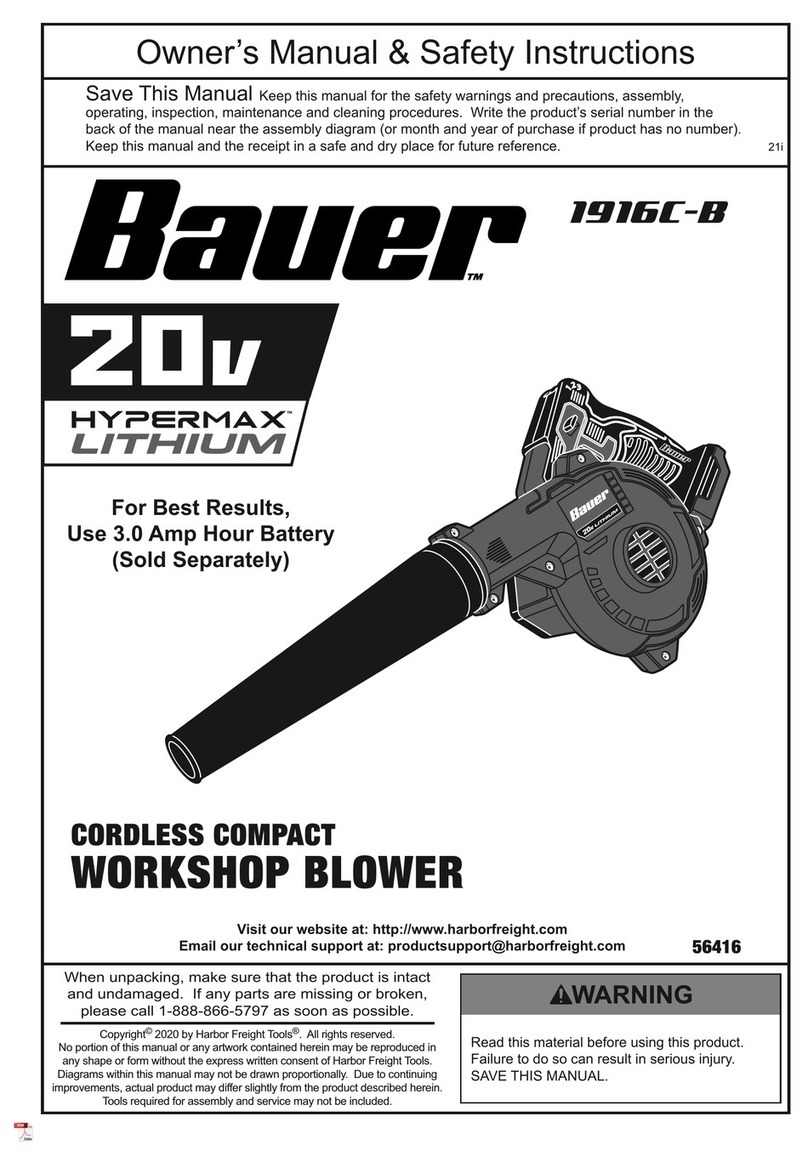
SKU 65003 For technical questions, please call 1-800-444-3353. Page 4
making any adjustments, chang-
ing accessories, or storing power
tools. Such preventive safety mea-
sures reduce the risk of starting the
power tool accidentally.
Store idle power tools out of thed.
reach of children and do not allow
persons unfamiliar with the power
tool or these instructions to oper-
ate the power tool. Power tools are
dangerous in the hands of untrained
users.
Maintain power tools. Check fore.
misalignment or binding of moving
parts, breakage of parts and any
other condition that may affect the
power tool’s operation. If dam-
aged, have the power tool repaired
before use. Many accidents are
caused by poorly maintained power
tools.
Use the power tool, accessoriesf.
and tool bits etc. in accordance
with these instructions, taking into
account the working conditions
and the work to be performed. Use
of the power tool for operations differ-
ent from those intended could result
in a hazardous situation.
Battery tool use and care5.
Recharge only with the Chargera.
(23) specied by the manufacturer.
A charger that is suitable for one type
of battery pack may create a risk of
re when used with another battery
pack.
Use power tools only with speci-b.
cally designated battery packs.
Use of any other battery packs may
create a risk of injury and re.
When battery pack is not in use,c.
keep it away from other metal ob-
jects, like paper clips, coins, keys,
nails, screws or other small metal
objects, that can make a connec-
tion from one terminal to another.
Shorting the battery terminals togeth-
er may cause burns or a re.
Service6.
Have your power tool serviced bya.
a qualied repair person using
only identical replacement parts.
This will ensure that the safety of the
power tool is maintained.
Specic Blower Safety Warnings
Maintain labels and nameplates on1.
the tool. These carry important safety
information. If unreadable or miss-
ing, contact Harbor Freight Tools for a
replacement.
Do not start Blower when it is upside2.
down or when not in operating posi-
tion.
Do not use in enclosed or poorly3.
ventilated areas or in the presence of
explosive liquids, gasses or powders.
Do not use on gravel surfaces.4.
Switch tool off and remove Battery5.
Pack (12) when not being used, left
unattended, cleaned or moved to new
storage location.
Do not operate near people, especial-6.
ly children or pets. Do not blow debris
at bystanders or pets.
Do not use in the rain and do not hold7.
Charger or Battery Pack with wet
hands.
Keep Blower Tube (1) and all air in-8.
take vents clear of dusty debris, hair,




























